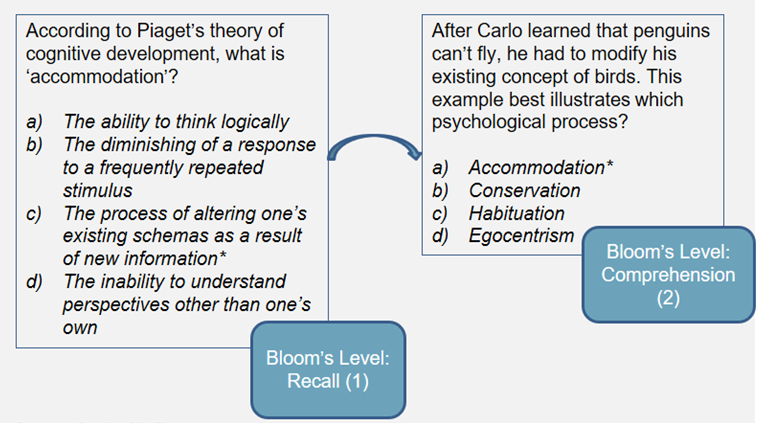Teaching is an impossible job. Can AI finally make it possible?
Preparing content progressions for units, writing lesson plans, making them engaging and varied while building up classroom routines and students’ skills, tracking individual progress while keeping each student in their zone of proximal development, allowing opportunities for 21st century skills, SEL and reflection, connecting emotionally, communicating with parents, collaborating with colleagues… the tasks of teaching are about triple what a human being can actually do on a daily basis.
With recent advances in AI, it is worth asking, how much of that can be delegated? Maybe what’s left over could actually approach a reasonable job description?
What can NOT be delegated to AI?

1. Clever experience design
Sometimes, teaching can seem like a “mysterious process by which the contents of the notebook of the professor are transferred … to the notebook of the student without passing through the mind of either” [emphasis mine].
Of course, we know from research that “memory is the residue of thought”, so if nothing of substance passes through the mind of the student, nothing of substance will be retained.
Yet, the brain is constantly optimizing to try to avoid doing hard work, especially when we are pushing it to do hard work for 8 hours a day every day, switching focus completely every hour. Creating tasks that force the student to engage their brain and actively process the material is a challenging and fickle art that teachers do not usually have time to undertake with the effort it deserves. (There is a chance that future models could do this, but current models definitely cannot.)
2. Emotional connection with students
“They won’t care how much you know, until they know how much you care.”
This may be true to different degrees for different teachers and students, but it is always true to some degree. Students and their learning benefit from an emotional connection with their teachers, and an emotional connection with AI is never going to be the same. Even if it may be useful to have a companion, a sounding board, or even a tutor, it will not replace a connection with a human being
What CAN be supported with AI?
1. Extracting learning objectives from readings and other resources
This is directly in the wheelhouse of the large language models we are seeing right now. They can already pull out learning objectives and design multiple choice questions to target them (see here). Many schools require teachers to painstakingly and pre-emptively write lesson plans for every lesson they will teach. Now AI can do that, and can adjust as teachers adjust their plans in response to their students. This can help teachers as well as students, admin, and parents, organize their thinking about what has been learned and how it is setting a foundation for what will be learned next.
2. Designing learning progressions
The natural next step would be to link these learning objectives into curriculum maps. Existing curriculum maps are dizzyingly complex. They are a pain to write and a pain to read. I’m not sure I’ve seen one used actively to design curriculum in the wild.

If you have a lot of autonomy over the curriculum and you are not following a prescribed textbook but rather collecting resources and activities for your students to do, AI could help make sure there are cohesive progressions throughout those resources.
If you are following a prescribed curriculum, AI could take it from the flat pdf format which is essentially equivalent to print, and make it an impressive curriculum tool that can be navigable in many different dimensions, rather than having to be read cover to cover.
3. Tracking individual student progress and generating targeted extra practice problems
This is the one I am the most excited about. If you teach math, you’ve probably heard of DeltaMath (and if you don’t, you probably haven’t). It is a top-notch tool that has organized K-12 math into clear learning objectives and learning progressions, that it then uses to track individual student progress and assign just-in-time practice for what the student needs most. I’m sure this was a huge undertaking to code and that must be the reason it’s the only one of its kind (unless you count the AP website).
But now this can be done with any curriculum. Turn any linear, paper-and-pencil curriculum into a high-powered individualized learning machine that students can use to practice and improve their understanding in the most efficient way possible.
4. Brainstorm learning experiences and teaching moves
Just because AI cannot do the clever experience design described in the previous section, it doesn’t mean that it can’t be helpful to a human who is engaged in this task. Ultimately the human will likely need to make the final calls, but there’s no reason AI couldn’t be a fruitful brainstorming collaborator. Even if its ideas aren’t going to be radical, they may spark an idea in the human!
5. Grouping
Whenever I have asked teachers about using data in the classroom, they seem to always talk about using the results of formative assessment to create groups. But when I ask for futher details on how they actually do that, it turns out they “kind of just eyeball it”.
An AI could place the students in clusters and suggest groups that are either heterogeneous or homogeneous depending on the teacher’s goal. It can also then suggest activities perfectly tailored to each group that would help them improve what they need to work on.
6. Communicating with parents
I know at first glance it may not seem like this is a task that would be ripe for automating. However, for secondary teachers who are teaching 100+ kids, staying in touch with parents is a crucial and daunting task. AI could identify students that need support and draft an email to the parents that summarizes the situation and begins a conversation. (Of course, it can also notice growth and email parents about positive developments, something I’m sure many teachers would love to do if they had time!)
Or it can take the data of grades and feedback and turn it into a narrative that parents can follow, even suggesting discussion questions for them to explore with their kids.
What else do you think could be automated with AI?
Original Medium post here.



